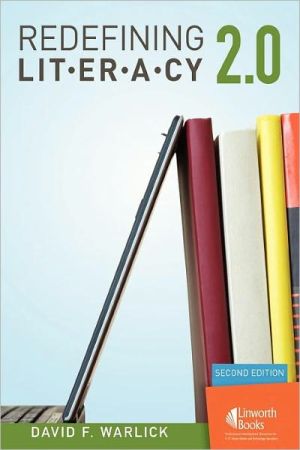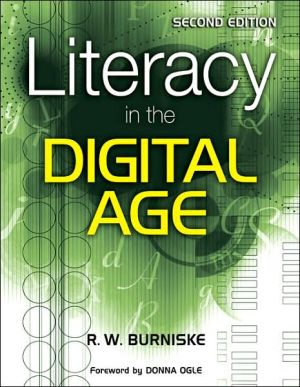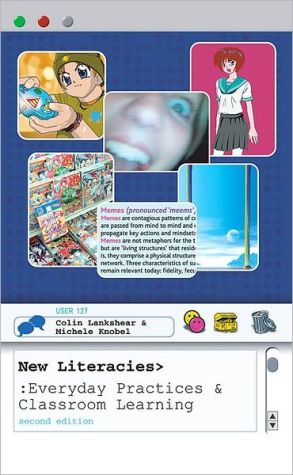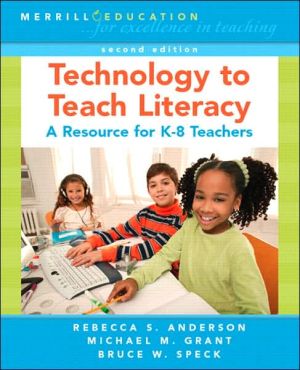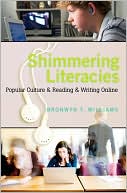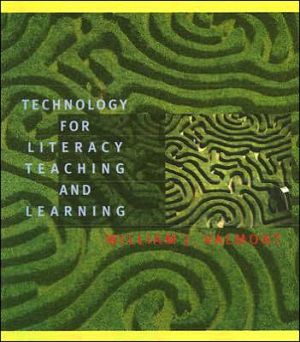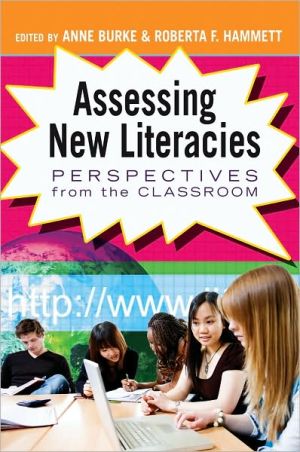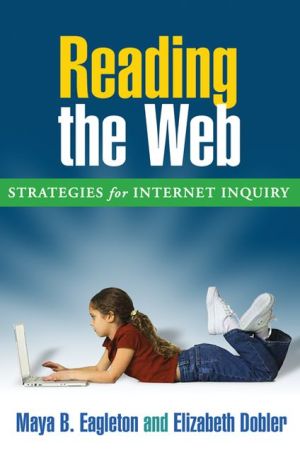Redefining Literacy 2.0
This seminal work on what literacy truly means in the 21st century is filled with big, meaningful ideas. The purpose of this book is not to replace the three Rs, but to expand them to a model for literacy that applies to classrooms which are shape-shifting under the pressures of converging conditions. This is a must-read for all educators!\ • Exposes meaning from global interactive, multimedia, and electronic cybraries\ • Employs information for solving challenges and constructing...
Search in google:
This seminal work on what literacy truly means in the 21st century is filled with big, meaningful ideas. The purpose of this book is not to replace the three Rs, but to expand them to a model for literacy that applies to classrooms which are shape-shifting under the pressures of converging conditions. This is a must-read for all educators!• Expose meaning from global interactive, multimedia, electronic cybraries• Employ information for solving challenges and constructing information• Express ideas compellingly and fluently through technology to a diverse audienceThis resource features an associated Wiki web page where readers can access presentation slides, links to blog entries about redefining literacy from the edu-blogosphere, online handouts for conference presentations and workshops, various files associated with this book, and regularly updated web links that have started with Redefining Literacy for the 21st Century. VOYA In this newly revised edition, Warlick argues that the goal of technology is not to be infused throughout the curriculum. Rather, he asserts, those involved in the educational process need to redefine what it means to be literate in this era. In this twenty-first-century classroom, the three Rs should be replaced by the three Es: expose the truth, employ information, and express ideas in new ways. Web 2.0 tools can now facilitate deeper reading, what Warlick terms three-dimensional reading (across, down, and deeper). Search techniques need to be taught so that students can learn more independently—learn how to learn. Writing needs to include newer forms of expression for real audiences beyond the boundaries of the classroom. Finally ethics and safety need to be the concerns of all educational stakeholders. Those already conversant with technology will find this book useful, especially as they instruct others in the new tools and the new ways to think about literacy. A wiki Web page to support the book is just one of the resources featured in this new edition. Warlick, though, dismisses the attention being paid in schools nationwide to the basics (the three Rs). Unfortunately in the wake of No Child Left Behind, it might be more prudent to suggest ways in which technology might enhance the learning of those basic skills that are the focus not only of the tests students take but of the measure of the success of classrooms by many. In addition, Warlick never deals with access to this technology. Computers and the requisite software are not always accessible in schools, especially those where poverty is present. His rejection of filters is sound but again needs to be more rooted inthe reality of classrooms across the country that do filter computers that students use. Reviewer: Teri S. Lesesne
\ From the Publisher"Includes key resources, suggestions for further reading. Very practical. Highly recommended."\ -\ Pennsylvania School Librarians Association\ "Fans of Warlick's first edition of this book titled Redefining Literacy for the 21st Century will be equally impressed with [the] new edition. . . . The rich content of this title coupled with an easy-to-follow, logical format make the book practical and readable. Not only does Warlick wax wisely on his philosophy of 2.0 literacy, he gives readers a jump start in learning how to actually begin the process of teaching students in this environment, in addition to helping them learn to express their ideas 'compellingly' as they text message, create mashups, blog, use wikis, incorporate images, make and edit videos, and other use other 2.0 tools. He also presents important information on ethics and the use of Creative Commons, in addition to providing some 'action items' for educators in various positions, i.e. technology directors, library media specialists, teachers, principals, and others. This title is definitely worth the price for both digital natives, and digital immigrants like many of us in education."\ -\ Colorado Association of Libraries\ "We can expand the traditional 'Three Rs' and build role models for literacy in all classrooms, even in those that are shifting in content and intent on a daily basis, claims consultant Warlick. He describes the opposing forces at work inside and outside the typical public school classroom and exposes the underpinnings of such powerful contenders for students' and teachers' attention as computers and media. He argues for appropriate multimedia electronic resources, methods students can use to solve challenges in constructing information, and techniques of building competency through technology. He presents a day in the life of a 2015 school following his design, showing how students can express ideas compellingly, understand and use complex information, and understand contexts. He also guides educators through planning, implementation and assessment of his system."\ -\ Reference & Research Book News\ "In providing new and added dimensions to Literacy 2.0, David Warlick, technology guru, educator, educational consultant, and innovator, presents action plans and ideas for media specialists, school administrators, technology coordinators,\ teachers, students, and parents. . . . Throughout this guide, numerous features contribute to the text and add to its\ usefulness, including lists, charts, relevant quotations, suggested additional book titles, and websites for further study."\ -\ Catholic Library World\ \ \ \ \ \ VOYA\ - Teri S. Lesesne\ In this newly revised edition, Warlick argues that the goal of technology is not to be infused throughout the curriculum. Rather, he asserts, those involved in the educational process need to redefine what it means to be literate in this era. In this twenty-first-century classroom, the three Rs should be replaced by the three Es: expose the truth, employ information, and express ideas in new ways. Web 2.0 tools can now facilitate deeper reading, what Warlick terms three-dimensional reading (across, down, and deeper). Search techniques need to be taught so that students can learn more independently—learn how to learn. Writing needs to include newer forms of expression for real audiences beyond the boundaries of the classroom. Finally ethics and safety need to be the concerns of all educational stakeholders. Those already conversant with technology will find this book useful, especially as they instruct others in the new tools and the new ways to think about literacy. A wiki Web page to support the book is just one of the resources featured in this new edition. Warlick, though, dismisses the attention being paid in schools nationwide to the basics (the three Rs). Unfortunately in the wake of No Child Left Behind, it might be more prudent to suggest ways in which technology might enhance the learning of those basic skills that are the focus not only of the tests students take but of the measure of the success of classrooms by many. In addition, Warlick never deals with access to this technology. Computers and the requisite software are not always accessible in schools, especially those where poverty is present. His rejection of filters is sound but again needs to be more rooted inthe reality of classrooms across the country that do filter computers that students use. Reviewer: Teri S. Lesesne\ \
